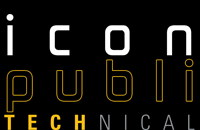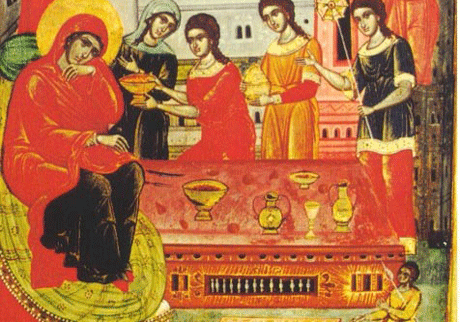
By C. Vieillescazes, P. Archier and M.S. Pistre
Study of Post-Byzantine Icon Varnishes

Thursday 17 September 2009, by Icon Network
![]() See the full article (zip 347 Ko)
See the full article (zip 347 Ko)

- Birth of the Virgin (detail)
The term ‘icon’ means, fundamentally, all religious pictures, portable or fixed, whatever the technique and the scale may be. Both art object and object of worship, the icon is a visual expression of the Orthodox faith. It holds a privileged position in the history of Byzantine art. The Christian icon has its origin at the end of the Hellenic and Roman portrait tradition. No icons are known before the sixth century. At this time, they had a protective value, as people believed that they had a miraculous origin. After the prohibition of images by the iconoclastic emperors, icons multiplied again in the tenth and eleventh centuries due to the growth of the cult of saints. Latin domination from 1204 did not interrupt this production. Cultural contacts were created between the east and the west. Icon painting achieved its highest expression in the Paleologue period (1261– 1453), when its development proceeded in parallel with wall painting; in fact, both types of work were often executed by the same artists. At the end of the fourteenth century and in the fifteenth, Moscow emerged as the main icon painting centre. After the conquest of Constantinople by the Turks in 1453, artistic activity moved to monastic centres, for example Mount Athos, where traditions were preserved, the Meteora, or Crete which was under Venetian rule. The post- Byzantine artists combined Byzantine traditions and occidental influences.
The aim of the present research is a better understanding of post-Byzantine techniques of icon painting, especially those of the seventeenth to eighteenth centuries, which are more often found in the Mount Athos monasteries. Moreover, in collaboration with restorers and historians, such a study could contribute to a very precise chemical characterization of natural substances used in art, and to establishing a network between partners involved in the field of cultural heritage conservation.
One of the rare ancient texts describing post- Byzantine painting technique is the Painter’s Manual (Erminia) written by Dionysios of Fourna, a disciple of the master Panselinos, between 1728 and 1733. This text contains about 70 instructions (how to apply a gesso, preparation of red bole, how to gild icons, etc.); more particularly, some of them describe different varnish recipes (varnish from santalozi, yellow varnish, varnish made from raki, etc.). One of them is a heated conifer resin dissolved in hot oil (peziri, linseed oil). Depending on the translation, the ancient Greek word for the resin can have different interpretations. For example ‘pegoula’ can be translated as fir resin, pine resin, Venice turpentine. Moreover, some recipes mention ‘sandraka’ as a component, which can be translated as sandarac but which also designated in the past other types of resins. At the end, the artist applied several layers of the hot varnish with the palm of his hand.
So, the purpose of the present study was to evaluate the recipes of the Erminia. To this end, 25 varnish samples were studied, from icons coming from five monasteries (Simon Petra, Meghisti Lavra, Nea Skiti, Xenophontos, Xeropotamou). The oldest icon can be dated to the sixteenth–seventeenth century; most of them belong to the seventeenth to eighteenth centuries and one is from the early nineteenth century. Only four of them are dated exactly. There is a high possibility that the varnishes are the original ones, used by the hagiographers, since the icons are not known to have been restored in the past, according to the restorers of the Greek Ministry of Culture.
[...]
![]() See the full article (zip 347 Ko)
See the full article (zip 347 Ko)